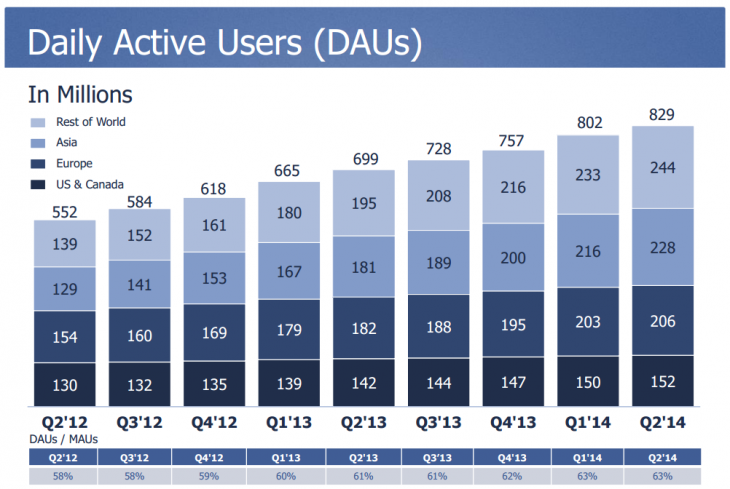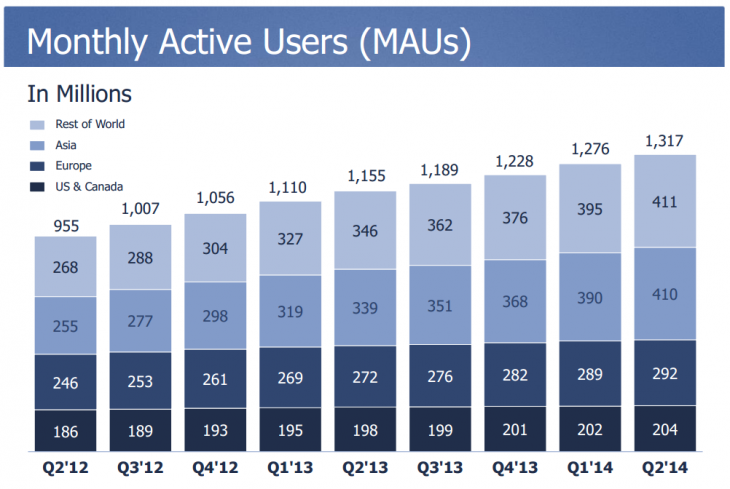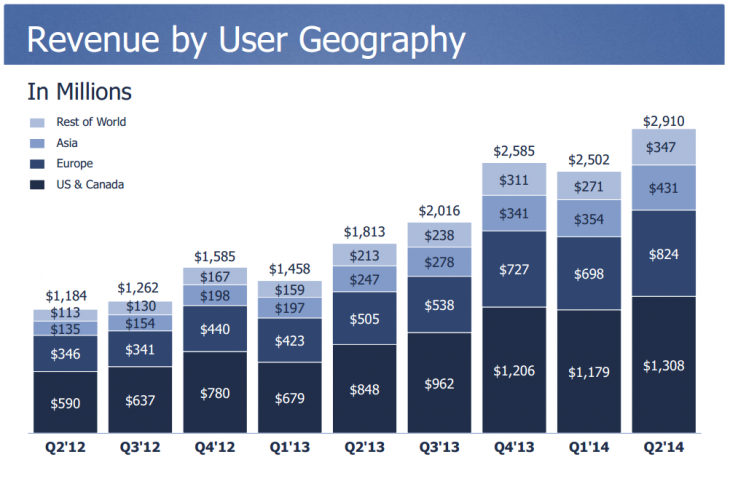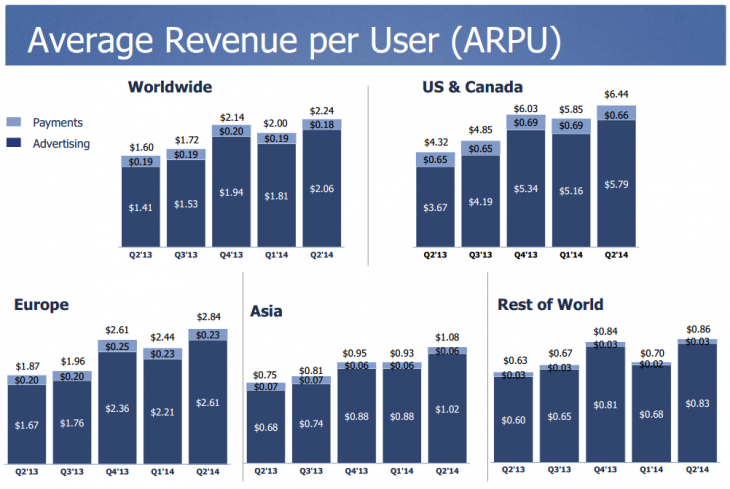
The growth of internet access and smartphone sales in Asia is turning the continent into fertile ground for social networks. But while growing a user base in Asia is one thing, making money is a stiffer challenge.
Asia has been the largest continent of registered users of Facebook for nearly two years. The social network continues to grow in the region despite the popularity of mobile messaging apps — a threat that’s been clear for a couple of years — and a feeling in the West that the service is passe for young people.
Rising user numbers
Facebook’s latest earnings report shows that user numbers in Asia continue to rise sharply, in stark contrast to the relative saturation in the US and Europe.
Two years ago, there were more daily users of Facebook in Europe, and also the US, than Asia. But, as of the last quarter, Asia is far ahead, while the number of users in “the rest of the world” have also jumped.
The numbers are even more pronounced for users who access the site at least once a month — Asia’s figure is more than double the US, and is on par with the number for the rest of the world.
Less money in Asia
Despite this growth, making money in Asia is an altogether different story.
Revenue from Asia has increased more than three-fold in the past two years, but it is still around half of that from Europe, and a third of that from US.
More users and less revenue means that the revenue generated from a user in Asia is far lower than those in Europe or the US.
Facebook is now making a dollar per user in Asia. That’s a good increase on $0.75 one year ago, but it’s well behind the average revenue per user (ARPU) of $6.44 in the US and $2.84 in Europe.
Twitter too
Twitter suffers from a similar issue. The company doesn’t issue the same detailed charts as Facebook, but its latest earnings reveal that two-thirds of its revenue was generated by users in the US, despite most of its users residing overseas.
The company has focused its advertising efforts on the US market first, and it says that international revenue — Europe, Asia and elsewhere — has grown 168 percent over the past year, but we can expect that Asia accounts for a minority of that non-US income.
Why?
Some of the reasons for the large gap in revenue include:
Mobile devices
Most of Asia’s ‘mobile population’ are still on feature phones. Those who have upgraded to smartphones are likely to own an Android device — the operating system accounts for 85 percent of global smartphone shipments.
Android users typically make fewer purchases in general, thanks to payment issues and the lower cost of the phone, which appeals to those on tighter budgets. These factors are amplified by lower average incomes in many parts of Asia.
Low digital media spend
Advertisers in Asia have broadly been slower to adopt digital business models. That is likely a combination of fragmented local media markets, and the fact that internet adoption across the region remains lower than in the West, which means fewer eyeballs for advertisers — though Facebook is working to simplify its offering for brands in Asia.
Low credit cards penetration
Credit card adoption is an important part of payments, and this figure is far lower in Asia than the US or Europe. Credit card penetration is estimated to be around one percent in Indonesia, one percent in Vietnam, five percent in Thailand, to name just three examples.
Mobile is key for the future
Both Facebook and Twitter have a strong presence and revenue model on mobile, which is key to monetizing as efficiently as is possible in Asia.
Facebook has teased a mobile payments service in the future, and may follow the lead of Asian companies by integrating services into its Messenger app — both of which are revenue models suited to Asia.
Ultimately, however, consumer trends and economic factors mean Asian users will almost certainly never spend more than their Western peers on average, but the fact that there are so many people in the region makes Asia an important market to monetize.
Also read: How to create a better Facebook Group that thrives, using Facebook’s own research
Headline image via Brendan Smialowski / AFP / Getty Images
Get the TNW newsletter
Get the most important tech news in your inbox each week.









